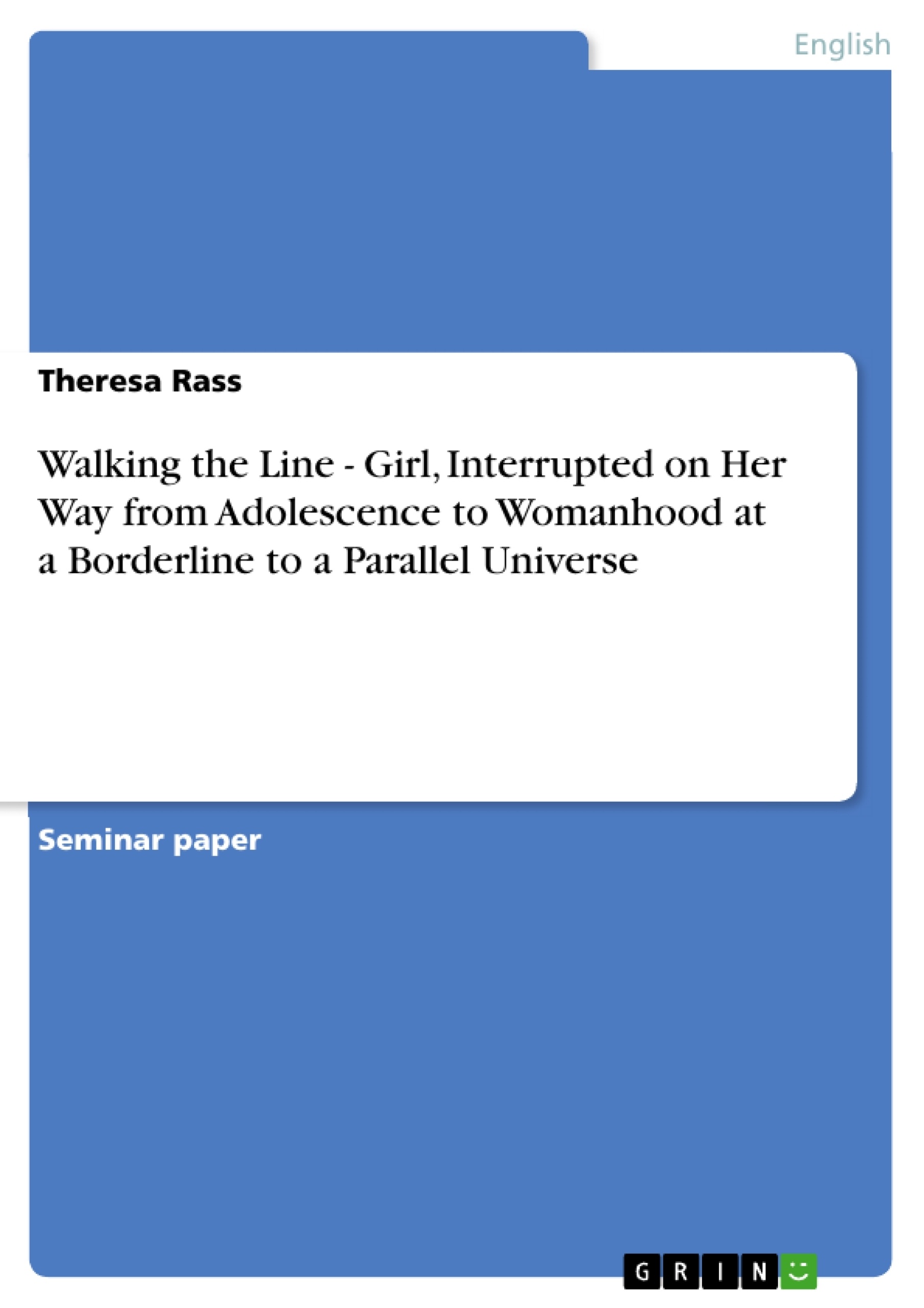In her autobiographical novel Girl, Interrupted Susanna Kaysen deals with the probably most difficult and influential period in her life. At the end of the 1960s, when she was eighteen, she was committed to a mental institution after a half-hearted suicide attempt and diagnosed with Borderline Personality Disorder. She spent two years at McLean, where also famous persons like Sylvia Plath, Anne Sexton, Robert Lowell and Ray Charles have been in treatment.
This paper will be trying to point out the difficulties with which people, especially women, were confronted in the 1960s, when they were different in some way and how this could result in being caught in a kind of parallel universe or, even worse, being stuck in between two worlds and not knowing were they belong.
Table of Contents
- Introduction
- A Borderline Topography
- Parallel Universes
- World Inside vs. World Outside
- Refuge vs. Prison
- Adolescence vs. Madness
- Suicide Attempt vs. Cry for Help
- World of the Insane vs. World of the Sane
- Conformity vs. Rebellion
- What's Normal?
- The Role of Women in the 1960s: Establishment and Parental Expectations
- Finding One's Way
- Conclusion
Objectives and Key Themes
This paper explores the experiences of women in the 1960s who were diagnosed with mental illness, specifically Borderline Personality Disorder. Through the lens of Susanna Kaysen's autobiographical novel *Girl, Interrupted*, the paper investigates the challenges these women faced, including societal expectations, the complexities of diagnosis and treatment, and the subjective experience of being caught between worlds.
- The impact of societal norms and expectations on women in the 1960s
- The complexities and ambiguities surrounding the diagnosis and treatment of Borderline Personality Disorder
- The subjective experience of being caught between worlds, as seen in the concept of a "parallel universe"
- The exploration of self-identity and the search for belonging amidst societal pressures and mental health challenges
- The importance of individual experiences and narratives in understanding mental illness and the complexities of human behavior
Chapter Summaries
The introduction presents the biographical context of *Girl, Interrupted*, focusing on Susanna Kaysen's commitment to a mental institution at the end of the 1960s and her subsequent diagnosis with Borderline Personality Disorder. It introduces the central theme of the "parallel universe" as a metaphor for the experience of being different and struggling to find one's place in society. The paper aims to examine the difficulties faced by women in the 1960s who were deemed "different" and how this could lead to a sense of being caught between two worlds.
Chapter 2 explores the complexities of Borderline Personality Disorder, outlining the diagnostic criteria and highlighting the challenges associated with diagnosis and treatment. The chapter discusses the "mercurial style" of BPD, which is characterized by emotional intensity, impulsivity, and creativity. The chapter emphasizes the difficulty in distinguishing between normality and abnormality in relation to BPD, demonstrating the challenges in establishing a clear "borderline".
Chapter 3 delves into the concept of a "parallel universe" as a representation of the experience of mental illness. The chapter explores the world inside the mental institution, McLean, contrasting it with the world outside. The chapter also examines the experiences of other patients, such as Lisa and Daisy, illustrating the diverse realities and experiences of individuals struggling with mental health issues.
Chapter 4 examines the specific challenges faced by women in the 1960s, focusing on the role of societal expectations and the pressures of conforming to traditional norms. The chapter explores the theme of "finding one's way" in a society that often restricts and defines the roles of women.
Keywords
The primary keywords and concepts explored in *Girl, Interrupted* include: Borderline Personality Disorder, mental illness, "parallel universe", identity, societal norms, women in the 1960s, subjective experience, diagnosis, treatment, therapy, and the search for belonging.
- Citation du texte
- Theresa Rass (Auteur), 2008, Walking the Line - Girl, Interrupted on Her Way from Adolescence to Womanhood at a Borderline to a Parallel Universe, Munich, GRIN Verlag, https://www.grin.com/document/141322



